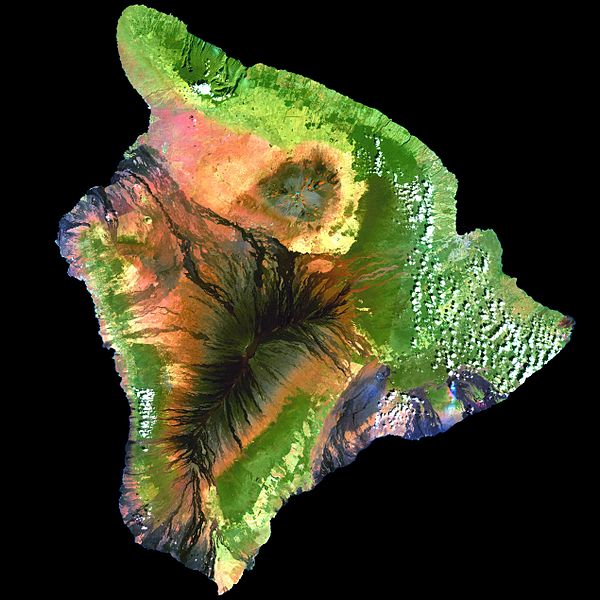Fájl:Island of Hawai'i - Landsat mosaic.jpg
Megjelenés

Az előnézet mérete: 600 × 600 képpont További felbontások: 240 × 240 képpont | 480 × 480 képpont | 768 × 768 képpont | 1 024 × 1 024 képpont | 2 048 × 2 048 képpont | 5 076 × 5 076 képpont.
Eredeti fájl (5 076 × 5 076 képpont, fájlméret: 5,19 MB, MIME-típus: image/jpeg)
Fájltörténet
Kattints egy időpontra, hogy a fájl akkori állapotát láthasd.
| Dátum/idő | Bélyegkép | Felbontás | Feltöltő | Megjegyzés | |
|---|---|---|---|---|---|
| aktuális | 2009. szeptember 1., 12:59 |  | 5 076 × 5 076 (5,19 MB) | Túrelio | saved with 95% quality (low compression), but without "progressive" option |
| 2009. szeptember 1., 12:59 |  | 5 076 × 5 076 (4,9 MB) | Bidgee | Fix thumbnail generation issue caused by progressive loading. | |
| 2009. szeptember 1., 12:31 |  | 5 076 × 5 076 (4,91 MB) | Rocket000 | reuploading | |
| 2007. december 27., 12:52 |  | 5 076 × 5 076 (4,91 MB) | Avenue | {{Information| |Description=This simulated true-color image of the island of Hawai'i was derived from data gathered by the Enhanced Thematic Mapper plus (ETM+) on the Landsat 7 satellite between 1999 and 2001. |Source=[http://veimages.gsfc.nasa.gov/2712/l |
Fájlhasználat
Az alábbi lapok használják ezt a fájlt:
Globális fájlhasználat
A következő wikik használják ezt a fájlt:
- Használata itt: af.wikipedia.org
- Használata itt: ar.wikipedia.org
- Használata itt: ast.wikipedia.org
- Használata itt: az.wikipedia.org
- Használata itt: be.wikipedia.org
- Használata itt: bn.wikipedia.org
- Használata itt: br.wikipedia.org
- Használata itt: ca.wikipedia.org
- Használata itt: ceb.wikipedia.org
- Használata itt: cy.wikipedia.org
- Használata itt: de.wikipedia.org
- Használata itt: de.wikivoyage.org
- Használata itt: en.wikipedia.org
- Hawaii (island)
- Mauna Loa
- Landsat program
- Geoinformatics
- Puna, Hawaii
- User:Spikebrennan
- Portal:Hawaii/Selected article
- Portal:Hawaii/Selected article/11
- Wikipedia:Featured picture candidates/February-2008
- Wikipedia:Featured picture candidates/Big Island of Hawai'i
- User:Hawaiian Mafia
- User:Aoi/sandbox
- Használata itt: es.wikipedia.org
- Használata itt: es.wikibooks.org
- Használata itt: eu.wikipedia.org
- Használata itt: fa.wikipedia.org
- Használata itt: fr.wikipedia.org
- Használata itt: fr.wikivoyage.org
- Használata itt: ga.wikipedia.org
- Használata itt: gl.wikipedia.org
- Használata itt: haw.wikipedia.org
- Használata itt: he.wikipedia.org
- Használata itt: hi.wikipedia.org
- Használata itt: ia.wikipedia.org
- Használata itt: id.wikipedia.org
- Használata itt: incubator.wikimedia.org
- Használata itt: is.wikipedia.org
- Használata itt: ja.wikipedia.org
- Használata itt: jv.wikipedia.org
A fájl globális használatának megtekintése

